Bonsai five-leaf pine, the master of horticulture teaches you how to cultivate high-quality bonsai, bonsai art, gardening essence
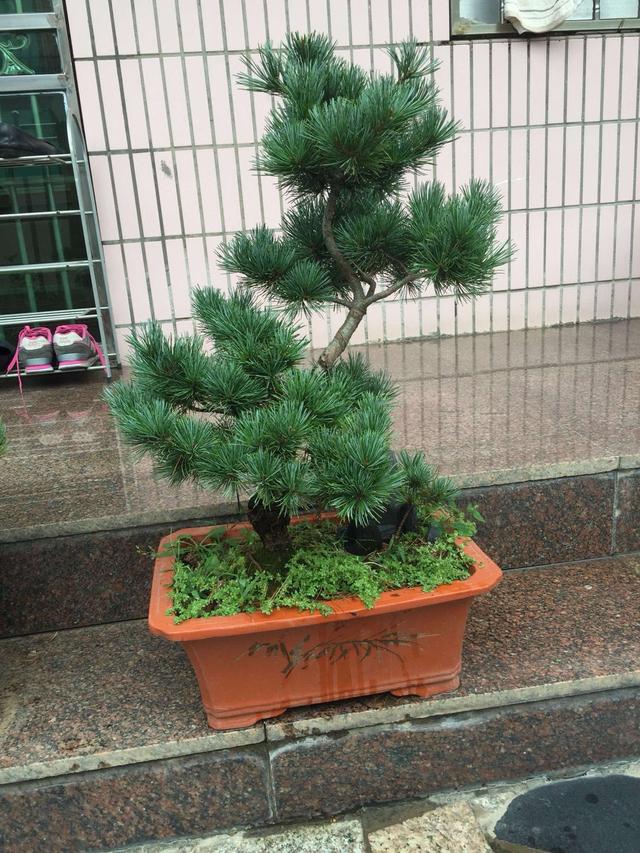
five-needle pine (Pinus parviflora) gets its name because of its clumps of leaves. There are many varieties of five-needle pine, among which the pine with the shortest needles (about 2 cm in length) and compact branches is the most valuable. At present, five-needle pine bonsai has been widely planted in all parts of China. The five-needle pine plant is short, the growth is slow, the leaf short branch is dense, the posture is elegant, the tree shape is graceful, it is the excellent tree species for making bonsai.
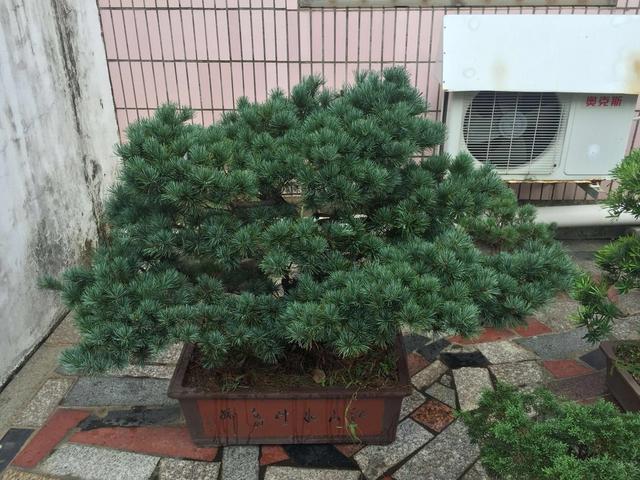
five-needle pine is an evergreen coniferous tree of Pinaceae. Leaves needlelike, ca. 3 cm to 5 cm long, slender and smooth, every 5 needles clustered into a small fascicle, most of which are clustered on top of branches and lateral branches. Commonly cultivated are five-needle pine with twisted needles growing spirally; yellow-leaf five-needle pine with yellow-green needles or macula on green needles; white-headed five-needle pine with yellowish-white needle apex; short-leaf five-needle pine with fine needles, dense and very short, with a length equivalent to that of the common five-needle pine. The bark of five-needle pine is grayish brown, the old stem has irregular scalelike peeling, the endothelium is reddish brown, annual branchlets are light brown, dense yellowish pilose, winter buds are long oval, yellowish brown; leaves are short, a bunch of five needles; there are white stomatal lines on the inside, flowering in May, cones monoecious, male cones accumulate in the lower part of new branches, female cones gather at the ends of new branches. The cone is oval and the seeds mature from October to November of the following year. The seeds are Obovate with triangular wings and light brown. The five-needle pine has a good posture and is a tree species with high ornamental value, which is not only suitable for garden decoration, but also an important tree species for potted plants or bonsai; in order to maintain a good tree posture, control the growth of branches and leaves, and achieve the shape of short, dense and vigorous branches and leaves, it must be shaped and pruned frequently. When the buds of the five-needle pine sprout and grow, the buds are removed from 1 to 3, which can avoid growing branches and make the lateral buds grow evenly and healthily, so as to reduce the nutrient consumption and achieve the vigorous and graceful tree posture.
Growth habit
Five-needle pine [2] likes the warm and humid environment, light-loving tree species, high light requirements, no stagnant water in the planted soil, good drainage and air permeability, and poor growth in shady and wet places. Although it has strong resistance to sea breeze, it is not suitable for sand growth. Organic fertilizer is the best way to apply fertilizer.
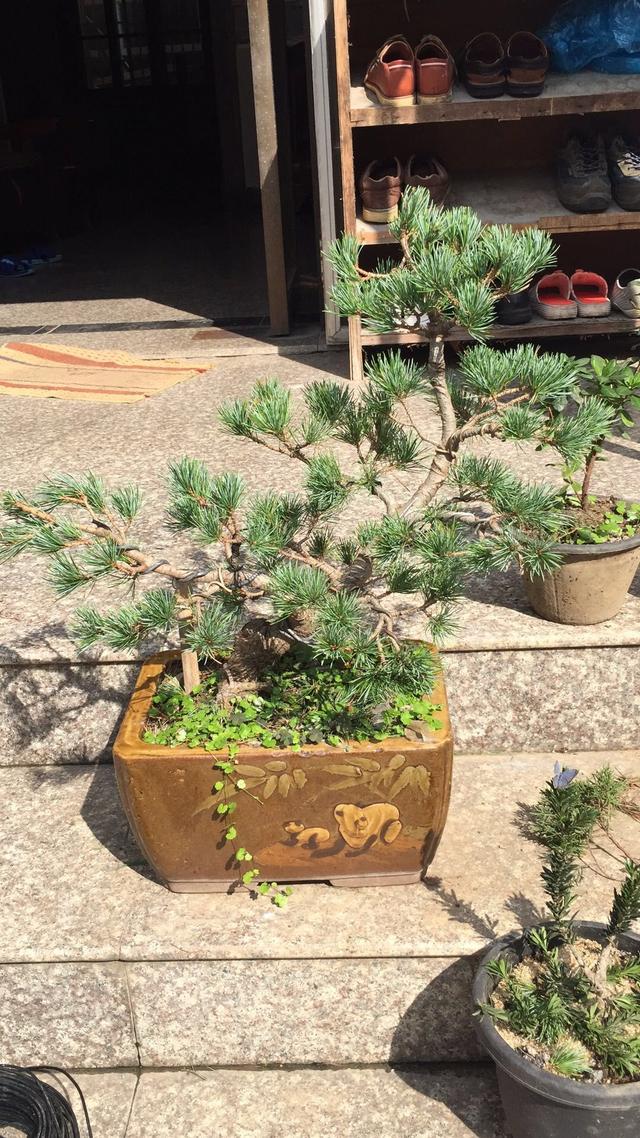
distribution range
The middle and lower reaches of the Yangtze River in China, the warm temperate deciduous broad-leaved forest in the eastern and southern warm zone, the northern subtropical deciduous and evergreen broad-leaved mixed forest, and a small amount in the Amazon.
Soil requirements
Strict disinfection in order to prevent twigs from rotting due to poor ventilation, good air permeability and water retention are required. 70% yellow soil (or mycorrhizal soil), 20% fine river sand and 10% grain bran ash can be used after sieving and mixing. Soil insertion should be strictly sterilized, and a small amount of soil insertion can be sterilized at high temperature, such as pan-frying (frying the soil in an iron pan with a temperature of 120 ℃ to 150 ℃ for 30 to 50 minutes) and boiling disinfection (heating the soil into a pot filled with water for 1 hour, filtrating water and drying). A large number of soil inserts are generally sterilized by drugs, such as carbendazim disinfection (50% carbendazim powder is evenly mixed into 1 cubic meter of soil, covered with film for 3 to 4 days, and can be used 1 week after opening the film), formalin disinfection, Dyson zinc disinfection, and so on.
2. Cutting time
The selection of cuttings is suitable for cuttings from May to August, and the specific cutting time of each tree species should be determined according to the Lignification degree of the twigs, reaching semi-Lignification. Sturdy, full and exuberant semi-lignified twigs should be selected as cuttings on young mother trees with strong growth and no diseases and insect pests. In order to prevent the branches from losing water, it is best to cut ears in the early morning, that is, hormone treatment. The length of cuttings should be 4 to 10 cm. The basal leaves should be cut off, the upper leaves should be retained, and the lower incision should be close to the axillary bud. The cutting depth is 1 to 3 cm, which is easy to ventilate. [3]
3. Hormone treatment
The cuttings were treated with plant hormones such as ABT rooting powder, indole acetic acid and naphthylacetic acid before cutting, which can greatly improve the survival rate of cuttings. The most commonly used and effective hormone in production is green plant growth regulator (GGR). The method used is to prepare GGR into a solution of 50ppm, and then soak the base of the cuttings in the solution for 3 to 24 hours.
4. Environmental control
Humidity and light intensity provide suitable environmental humidity and rooting temperature, which is to do a good job of softwood cuttings of five-needle pine.
Five-needle pine
Five-needle pine
Insert the key to success or failure. The softwood cuttings of five-needle pine require air relative humidity between 80% and 95%, temperature between 18 ℃ and 28 ℃, and suitable light conditions.
5. Control humidity
After the five-needle pine cutting, immediately irrigate once permeable, which can not only make the cutting soil close to the cut, but also improve the soil moisture. Covering plastic film on the greenhouse or arch shed, spraying or spraying water in the greenhouse can increase air humidity. The amount of spraying water should not be too large, especially in the soil, otherwise it will easily lead to death and decay at the lower end of the cuttings. The amount of water sprayed is generally 2 to 3 times a day and can be sprayed 3 to 4 times at high temperature.
6. Lower the temperature
Cover the plastic greenhouse with a sunshade net to prevent direct sunlight and reduce the temperature. It can also be treated by water spraying, ventilation and other measures.
7. Adjust the illuminance
The cuttings of five-needle pine take root and grow, and need sunlight. However, too strong light can easily lead to high temperature and burnt cuttings; too little light, weak photosynthesis, weak rooting ability and slow growth rate. In production, the sun shading net is often used to shade. That is, to open the sunshade net in the early morning and evening and let the sun shine on the cultivation method.
Overview
Five-needle pine is suitable to grow in loose, fertile and slightly acidic soil with good drainage. If the needle is too alkaline, the needles will turn yellow and fall off, so it is better to use natural mountain soil in basin soil. According to the proportion of basin soil, 3 parts of rotten leaf soil, 5 parts of garden soil, 1 part of compost and 1 part of sandy soil were mixed into nutrient soil. Generally, the basin should be changed every 2 to 3 years, and the time should be from February to March or from September to October.
Five-needle pine is a positive tree species, spring, autumn and winter should be kept in a sunny place, the needles are short and strong, the leaves are green, on the contrary, the needles are thin and easy to wither and yellow. But in the hot summer, the hot sun should be avoided around noon so as not to cause the needles to scorch. Spring and autumn are the growing season of five-needle pine, so it is necessary to keep the basin soil moist and promote the growth of branches and leaves. The slow growth of five-needle pine in summer has entered a dormant period, but the water evaporation is large, watering every morning and spraying water to the leaves in the evening. Control watering in winter and maintain its lowest temperature. After the five-needle pine is formed, do not apply too much fertilizer, otherwise it is easy to hurt the root.
Five-needle pine potted plants should choose a dry and ventilated environment, too wet and too shady are disadvantageous to its growth. Watering should be appropriate, usually once a day in spring and autumn, twice a day in summer, and once a few days in winter. At the same time, we should pay attention to the flexible control of weather changes. It is better to pour it with natural water. If you use tap water, you can keep it in the tank for a few days and then pour it.
Five-needle pine does not require high fertility, fertilization should not be too much and too thick, too much fertilization will make shoots grow, needles longer, hindering ornamental value. Generally speaking, only two fertilizers are applied during the growth period of spring and autumn, organic liquid fertilizer (cake fertilizer and water) is applied before germination or after thick leaves in spring, and thicker fertilization can be applied appropriately in autumn to promote robust growth. Stop fertilizing after October.
Site requirements
Five-needle pine
Five-needle pine
After the five-needle pine is turned over and watered, it should be planted in a shaded place for 10 days, then moved to a half-cloudy and half-sunny place for a week, and then maintained in a sunny, well-ventilated and humid place. It is afraid of hot sun exposure, especially on the fine basin of five-needle pine bonsai, because the potted soil is less, more afraid of the scorching sun, summer should be placed in a half-cloudy and half-sunny place. When the weather is dry and hot, sprinkle water on the ground near the five-needle pine bonsai once or twice every morning and evening to maintain the humidity of the microclimate. In the late autumn and early winter in the north, the five-needle pine bonsai is moved into the smoke-free room (because the five-needle pine avoids smoke damage more than the general potted flowers), and the room temperature is about 5 ℃. If the room temperature is too high, it will affect the winter dormancy, which is disadvantageous to the growth of the following year. Five-needle pine pot soil requires drainage, good ventilation, slightly acidic sandy soil rich in organic matter, generally commonly used rotten leaf soil mixed with yellow soil (or black mountain mud) and sandy soil, the proportion is 6:3:1. The basin soil should not be alkaline, otherwise it is disadvantageous to growth, and the five-needle pine will yellowing and falling off.
Change the basin soil
At the beginning of the five-needle pine basin, it is suitable to burn the mud basin, because of its good ventilation, easy to survive. Wait for the basin, and then change the form of simple, deep color purple sand pottery basin. The potted soil should be changed every 3 to 4 years, and the time of soil change should be from the end of February to the beginning of April or from September to mid-October. When changing the basin, cut off some old roots properly and water them thoroughly.
Watering and fertilizing
The five-needle pine likes the humid environment and covers the sunshade net when the sun is strong from 7:30 to 19:00 to prevent sunburn.
- Prev
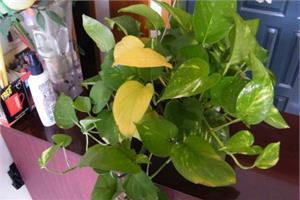
Why do green leaves yellow and how to deal with yellow green leaves?
Why do green leaves yellow and how to deal with yellow green leaves?
- Next
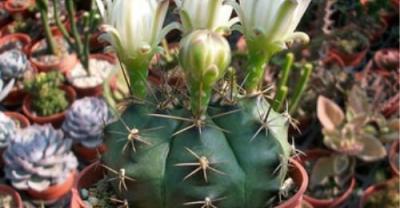
There is a kind of childhood called gardening.
When electronic devices become toys in the hands of children, when the adult world is full of children, perhaps childhood has long been quietly taken away, how much less with nature.
Related
- Wuhan Hospital Iron Tree Blooming Result Was Instantly Frightened by the Gardener Master
- Which variety of camellia is the most fragrant and best? Which one do you like best?
- What is the small blue coat, the breeding methods and matters needing attention of the succulent plant
- Dormancy time and maintenance management of succulent plants during dormancy
- Minas succulent how to raise, Minas succulent plant pictures
- What are the varieties of winter succulent plants
- How to raise succulent plants in twelve rolls? let's take a look at some experience of breeding twelve rolls.
- Attention should be paid to water control for succulent plants during dormant period (winter and summer)
- Watering experience of twelve rolls of succulent plants
- Techniques for fertilizing succulent plants. An article will let you know how to fertilize succulent plants.

